
Baltimore Recorders.org
About Bamboo Flutes
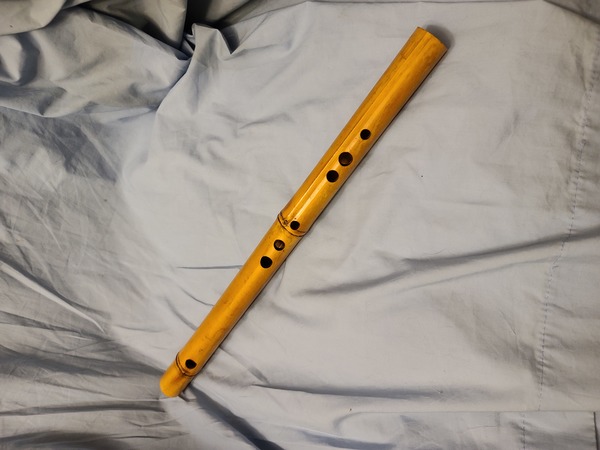
Flutes are some of the oldest extant musical instruments. Early flutes were made of bone. Three bone flutes dating back approximately 43,000 years were found in the Geissenklösterle cave in the Swabian Alps in Germany. Two were made of a bone from the wing of a mute swan and the other was made from the tusk of a woolly mammoth. The latter is approximately 7 inches long and has three holes. Another ancient flute was found in the nearby Hohle Fels cave, and was made from a griffon vulture bone. It is approximately 8.5 inches in length and has five finger holes.
Flutes that are made of reeds, or plants such as bamboo, are not nearly as durable as bone. Few reed flutes have survived that are more than two thousand years. Two such flutes were found in Hubei province of China in 1978. They were excavated from the Tomb of Marquis Yi of Zeng, along with more than 100 other musical instruments. The tomb is thought to date from 433 B.C. The flutes are nearly identical. They are made of bamboo, are both approximately one foot long, and each have five finger holes. They are transverse flutes, which are aligned with the horizontal line formed by the lips. Unlike most other transverse flutes, their finger holes are not in line with the mouth hole. Rather they are placed 90 degrees further around the flute. In China, these flutes are known as chi. They owe their longevity to the fact that they were lacquered.
The history of reed flutes dates back to 4,000 B.C., where we see them depicted in Egyptian paintings. Based on the prevalence of flutes that are made from reeds in cultures across the globe, including ones that are somewhat primitive, one can assume that flutes have been made of reeds for tens of thousands of years.
The transverse flute is thought to have originated in India. There are writings that mention such flutes that date back to 1500 B.C. (Other cultures of the time, such as in Egypt, used end blown flutes.) In India the bamboo flute is known as the bansuri. Its name is a combination of two Sanskrit words, bans meaning bamboo, and suri meaning melody. The bansuri is associated with Krishna, who is commonly depicted playing the instrument.
The flute pictured here is a transverse flute, but is not a bansuri, as the latter are made from thinner stalks of bamboo with fewer nodes. It is made from a single piece of bamboo. The mouth hole is placed near one of the nodes in the bamboo. The other nodes in the bamboo are routed out. It has six finger holes. The flute is roughly 16 inches long. One of the photographs shows it next to a Yamaha soprano recorder, so that you can get a sense of its size.
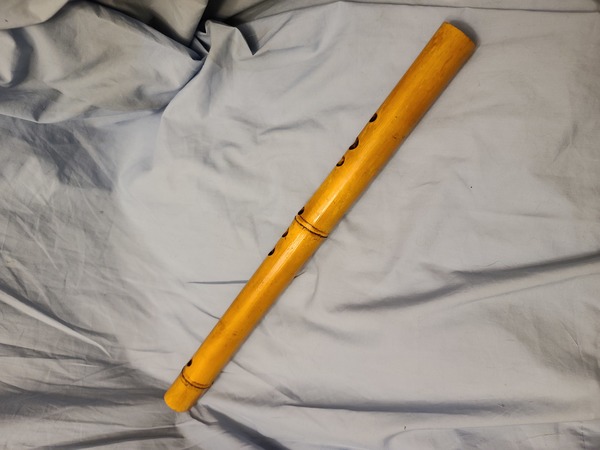
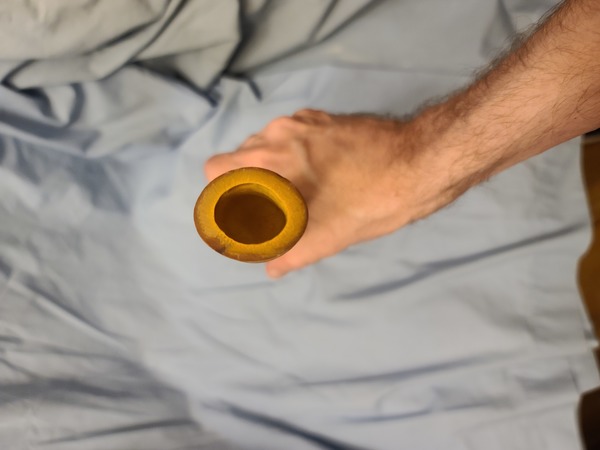
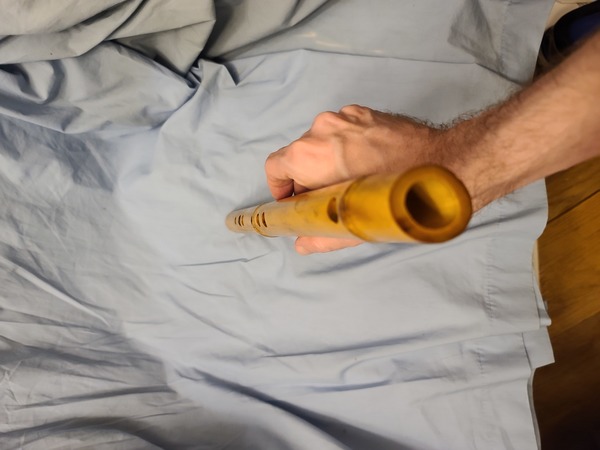
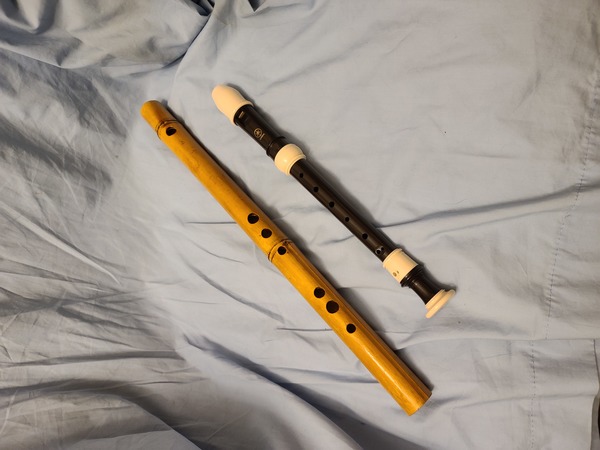
Web design copyright 2015 Michael Berger